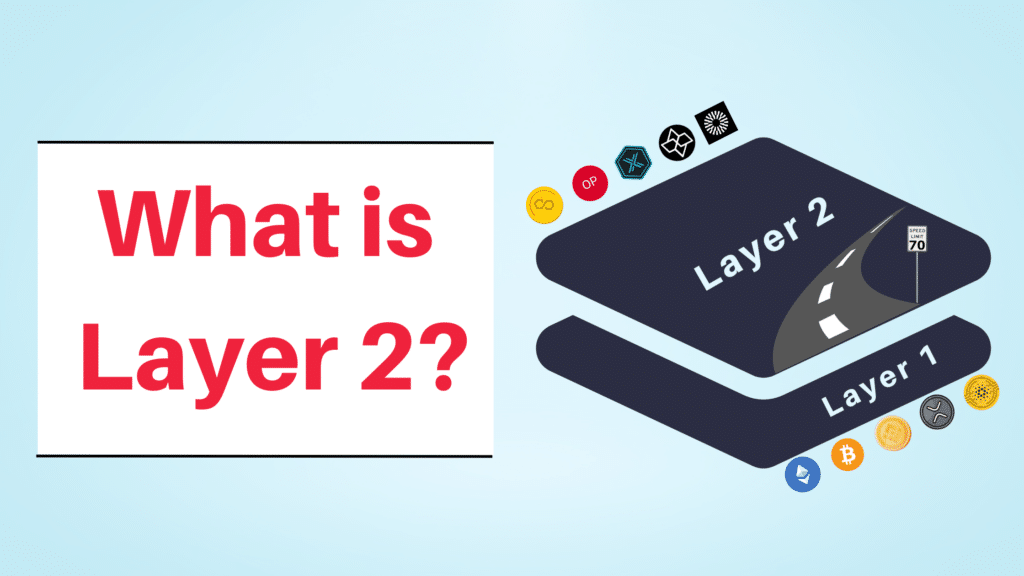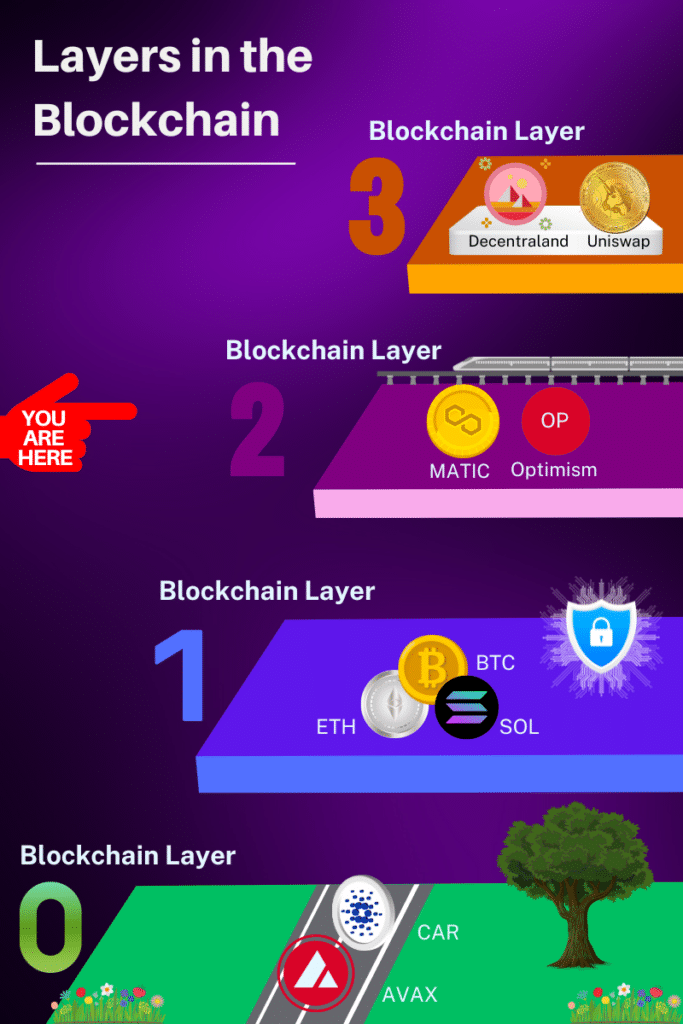What is Layer 2?
Layer 2 is a blockchain network built on top of another blockchain. It is a form of a scaling solution for Layer 1 blockchains.
The Long Definition
Layer 2 refers to a network that is built on top of another network. This is usually done with the goal of improving the scalability of the base network known as the main net or Layer 1 protocol. Examples of Layer 2 (L2) blockchains include the Lightning Network, Arbitrum, Optimism, and Boba Network.

Understanding Layer 2
To understand Layer 2, you must first understand Layer 1. Layer 1 is the base network. It has the node operators, the consensus mechanism, and the ecosystem’s native token. It can process and record transactions all on its own. For example, Bitcoin and Ethereum are Layer 1 blockchains.
All nodes that store the history of Bitcoin (BTC) transaction data are part of the Bitcoin network. The same is true for Ethereum and its ether (ETH) token.
On the other hand, Layer 2 is a secondary protocol that is built on top of an existing Layer 1 protocol. It can process transactions but cannot record them. For example, the Lightning network is built on Bitcoin while Arbitrum and Optimism are built on Ethereum.
Why is Layer 2 Important
Layer 2 networks are a type of scaling solution. Scaling solutions try to improve the transaction processing speed of Layer 1 blockchains. By doing so, they help improve the scalability of the base network.
Scalability refers to the ability of a network to handle an increasingly high load of transactions. A scalable network can meet the demand for transaction processing as it arises.
Why and How is Scalability a Problem?
Blockchain networks aim to be decentralized, secure, and scalable. However, according to the blockchain trilemma, a blockchain can only achieve two at best. So, if it’s secure and decentralized, it won’t be equally scalable. This trilemma is explained in detail in our Layer 1 article.

Bitcoin and Ethereum are good examples. Both have achieved decentralization and security really well. However, this has come at the cost of scalability. Bitcoin can only process 7 transactions per second (TPS) while Ethereum does 15 to 30 TPS.
Both blockchains are exceedingly popular, with millions of users. So, these transaction processing speeds are not nearly enough.
During peak periods, there is a high demand for bandwidth. However, due to the slow TPS, Bitcoin and Ethereum are unable to rise to meet it. This makes the networks congested, causing transaction fees to rise.
L2 solutions, like the Lightning Network and Arbitrum, are designed to solve this problem. They provide a way to increase scalability without making structural changes to the network. That way, a blockchain doesn’t have to sacrifice security or decentralization.
How Does Layer 2 Work?
A Layer 2 is a separate network built on a Layer 1 blockchain. It extends the Layer 1 network in a way and regularly communicates with it.
In this arrangement, L2 handles scalability and leaves decentralization and security to the base layer. For example, Arbitrum handles transactions and takes advantage of Ethereum’s robust security and decentralization.
How does that work?
Layer 2 can handle significantly more TPS than the main net. So, the transactions take place here before being posted on the main chain.
The L2 takes hundreds of transactions from multiple users and bundles them. This bundle is then posted on Layer 1 as a single transaction. That way, the L1 transaction fee gets distributed across many users, making it much cheaper.
Want to join the Dypto journey? Follow our socials!